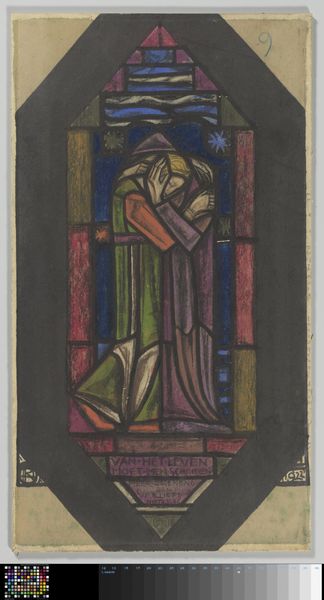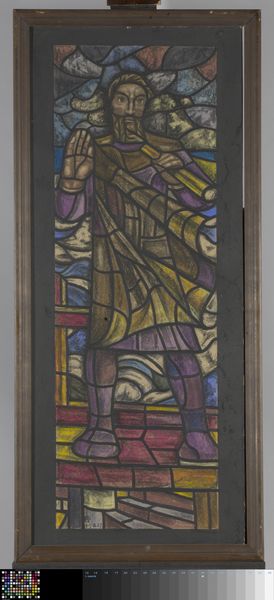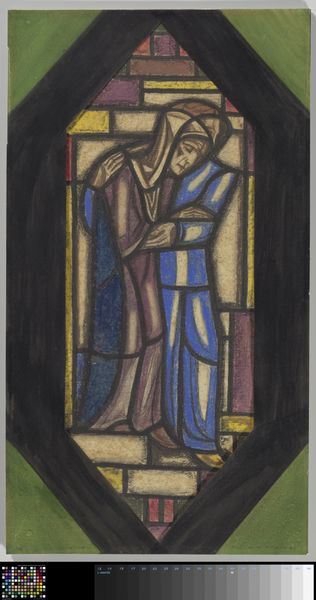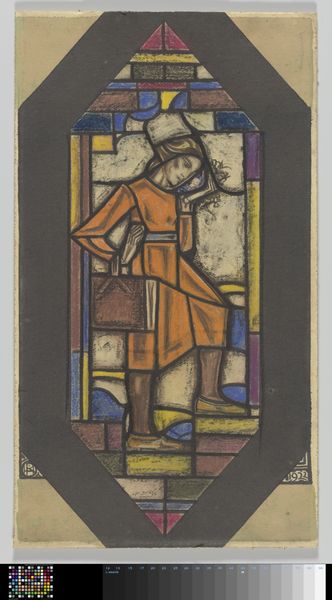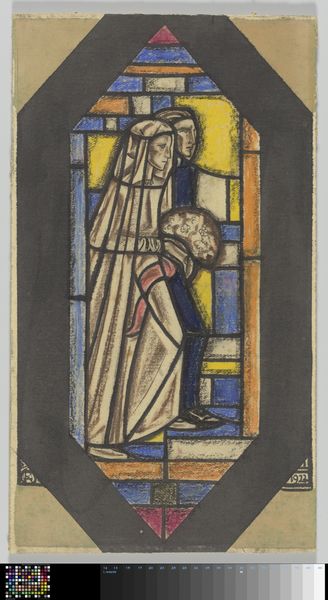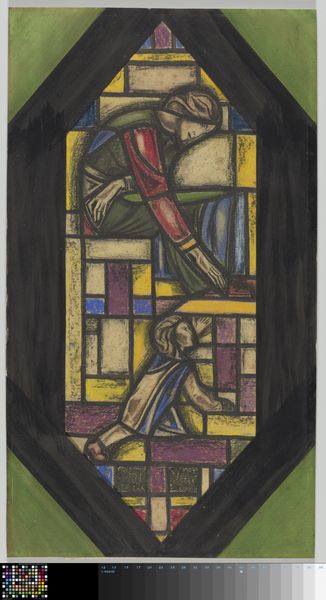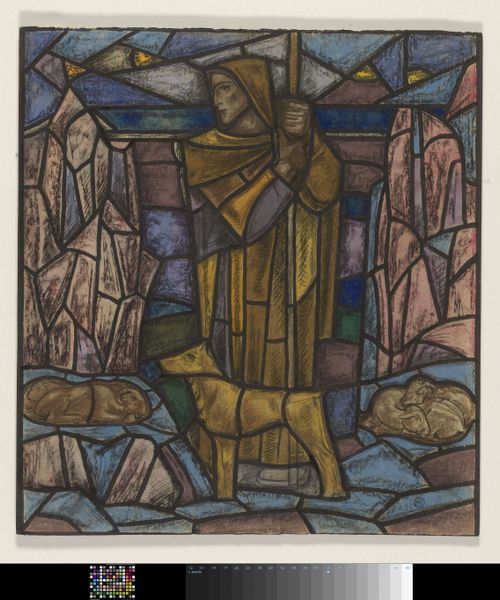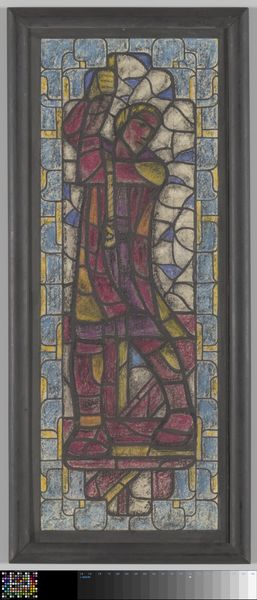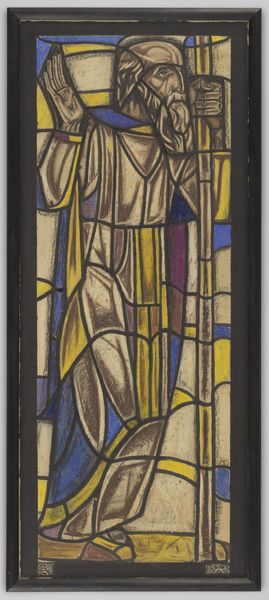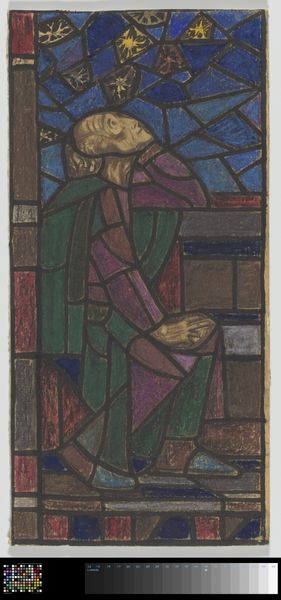
Dimensions: height 638 mm, width 355 mm, height 683 mm, width 402 mm
Copyright: Rijks Museum: Open Domain
Editor: So, here we have "The Stairway of Life," a pencil and colored pencil drawing on paper, made in 1922 by Richard Nicolaüs Roland Holst, housed here at the Rijksmuseum. The first thing that strikes me is the figure’s angularity and how the artist seems to use color to define shapes rather than describe them realistically. How would you interpret this composition? Curator: Initially, one is drawn to the interplay between line and color, wouldn’t you agree? The composition favors verticality, a series of stacked geometric forms contained within a pointed frame reminiscent of a stained-glass window. Notice the carefully delineated planes of color—blues, reds, yellows—each independently vibrant, yet contributing to a cohesive, if somewhat stark, whole. Do you see how the artist segments the figure, reducing the human form into nearly abstract components? Editor: I do. It’s almost as if he’s less interested in the figure itself and more in how those geometric forms fit together, like pieces in a puzzle. Curator: Precisely! The subject seems less important than the arrangement of form and color, the structural relationships created within the frame. Observe the figure holding a basket; its contents rendered as simple red circles, which provides a crucial visual counterpoint to the dominating verticals, wouldn’t you say? This tension contributes significantly to the work’s overall impact. Editor: That makes sense. I see how each individual color and form seems carefully calculated. Thanks, I see much more now! Curator: Indeed. Focusing on such elements gives one a richer understanding of the drawing itself and of what it signifies, perhaps, for its creator.
Comments
No comments
Be the first to comment and join the conversation on the ultimate creative platform.
